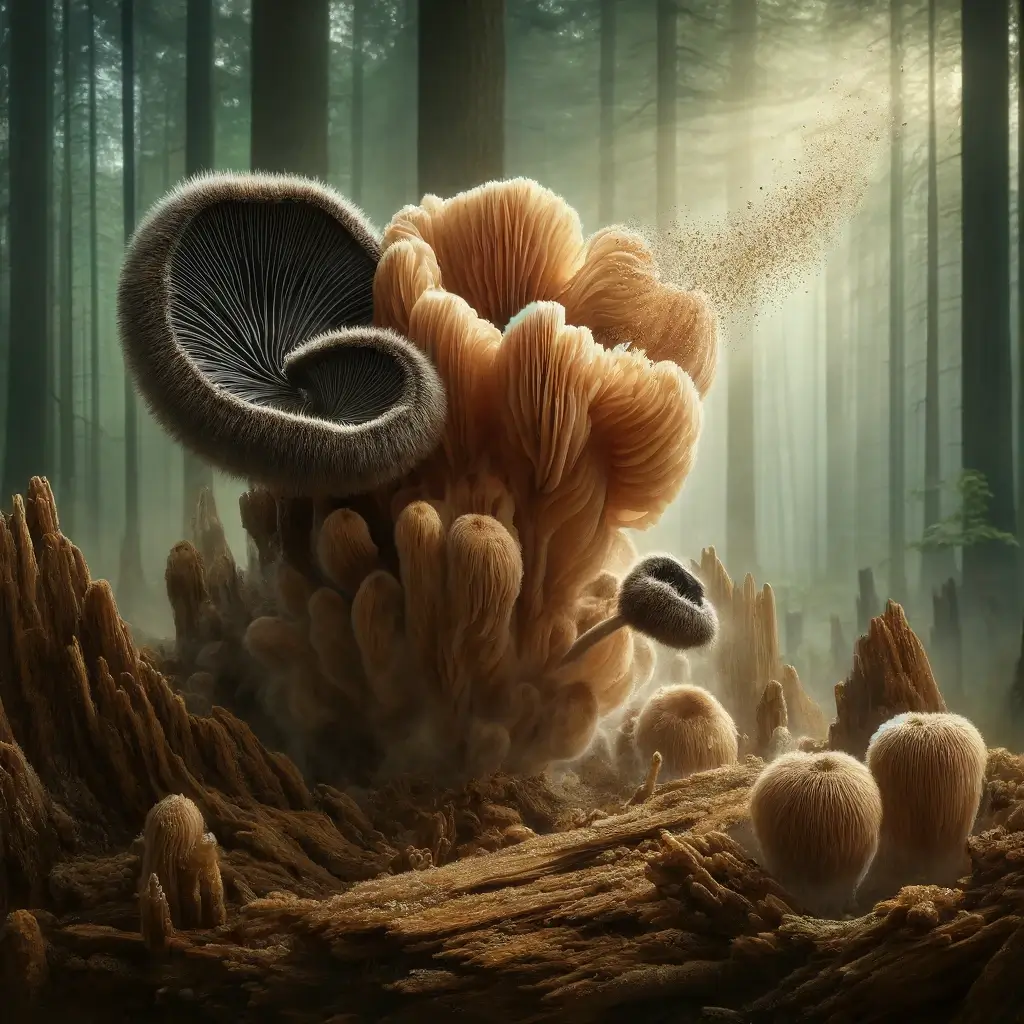Discover Nature’s Mysterious Hissing Mushroom: The Texas Star’s Ecological Significance
The Wonder of the Rare Hissing Mushroom
The natural world is replete with wonders, and among them, the rare hissing mushroom (Chorioactis geaster), also known as the Texas Star Mushroom, stands out as a captivating example of fungal ingenuity. Found primarily in North and Central Texas, with isolated sightings in Oklahoma and Japan, this mushroom is a study in adaptation and survival. Its dark, cigar-shaped exterior belies its dramatic transformation into a star-shaped structure, earning it the evocative nickname “Devil’s Cigar.”
Unique Spore Dispersal Mechanism
What makes the Texas Star even more remarkable is its unique mechanism of spore dispersal. During rainy weather, the mushroom opens with an audible hiss, releasing a visible cloud of spores into the air. This phenomenon, driven by internal pressure, showcases a rare combination of visual and auditory stimuli in the fungal world. Such features not only pique the curiosity of scientists but also highlight the intricate strategies fungi employ to ensure their propagation.
Ecological Significance and Habitat Requirements
Despite its eye-catching characteristics, the Texas Star is an exceedingly rare species, thriving only in highly specific habitats. It relies on decaying cedar elm stumps and requires precise soil conditions and climatic factors for survival. This rarity underscores its ecological importance, serving as both an indicator of environmental health and a subject of conservation interest. For mycologists and environmentalists, Chorioactis geaster is a symbol of biodiversity and the complex web of interactions that sustain ecosystems.
Scientific Studies on the Hissing Mechanism
The hissing mushroom has become a focal point of scientific inquiry, with recent studies revealing fascinating insights into its biology and ecological role. In 2023, researchers publishing in Mycological Research uncovered the biochemical processes underlying its hissing mechanism. The study highlighted how changes in atmospheric pressure and moisture levels trigger the release of spores, ensuring their dispersal across a wide area. Such adaptations underline the species’ evolutionary success in challenging environments.
Genetic Analysis and Global Connections
The Texas Star’s rarity has also prompted collaborative research between Kyoto University and the University of Texas. A 2024 genetic analysis revealed a shared ancestry between Texan and Japanese populations, providing evidence of ancient fungal migration patterns. This discovery deepens our understanding of fungal evolution and the biogeographical connections between continents.
Citizen Science and Conservation Initiatives
Beyond laboratory research, citizen science initiatives have played a pivotal role in tracking the distribution of Chorioactis geaster. The University of Texas launched a mobile app in 2024 to encourage public participation in documenting sightings. This crowdsourced data has significantly expanded knowledge of the mushroom’s range, aiding conservation planning and raising public awareness about the importance of preserving rare species.
Nutrient Cycling and Forest Health
Ecologically, the Texas Star Mushroom contributes to nutrient cycling by breaking down organic material in its habitat. This process enriches the soil, fostering the growth of surrounding vegetation and supporting forest health. Such roles emphasize the interconnectedness of fungi with broader ecological systems, highlighting the need to protect these often-overlooked organisms.
A Symbol of Natural Ingenuity
The rare hissing mushroom is more than a natural curiosity; it is a testament to the ingenuity and resilience of life. Its dramatic transformations, rare adaptations, and ecological contributions make it a critical species for both scientific study and conservation efforts. As research continues to unveil its mysteries, Chorioactis geaster serves as a reminder of the delicate balance required to sustain biodiversity.
Appreciating and Preserving Natural Heritage
Encounters with the Texas Star Mushroom are rare, but they offer an opportunity to appreciate the complexity of nature. By observing without disturbing and advocating for its conservation, we ensure that this remarkable species remains part of our natural heritage. The hissing mushroom’s story is a call to action for preserving the interconnected systems that sustain life on Earth.
Scientific References
“Atmospheric Triggers of Spore Release in Chorioactis geaster,” Mycological Research, 2023.
“Genetic Lineages of Chorioactis: A Biogeographical Study,” Kyoto University and University of Texas, 2024.
University of Texas Citizen Science Initiative for Fungal Mapping, 2024.
“Role of Fungi in Forest Ecosystem Health,” Ecological Studies Journal, 2022.
